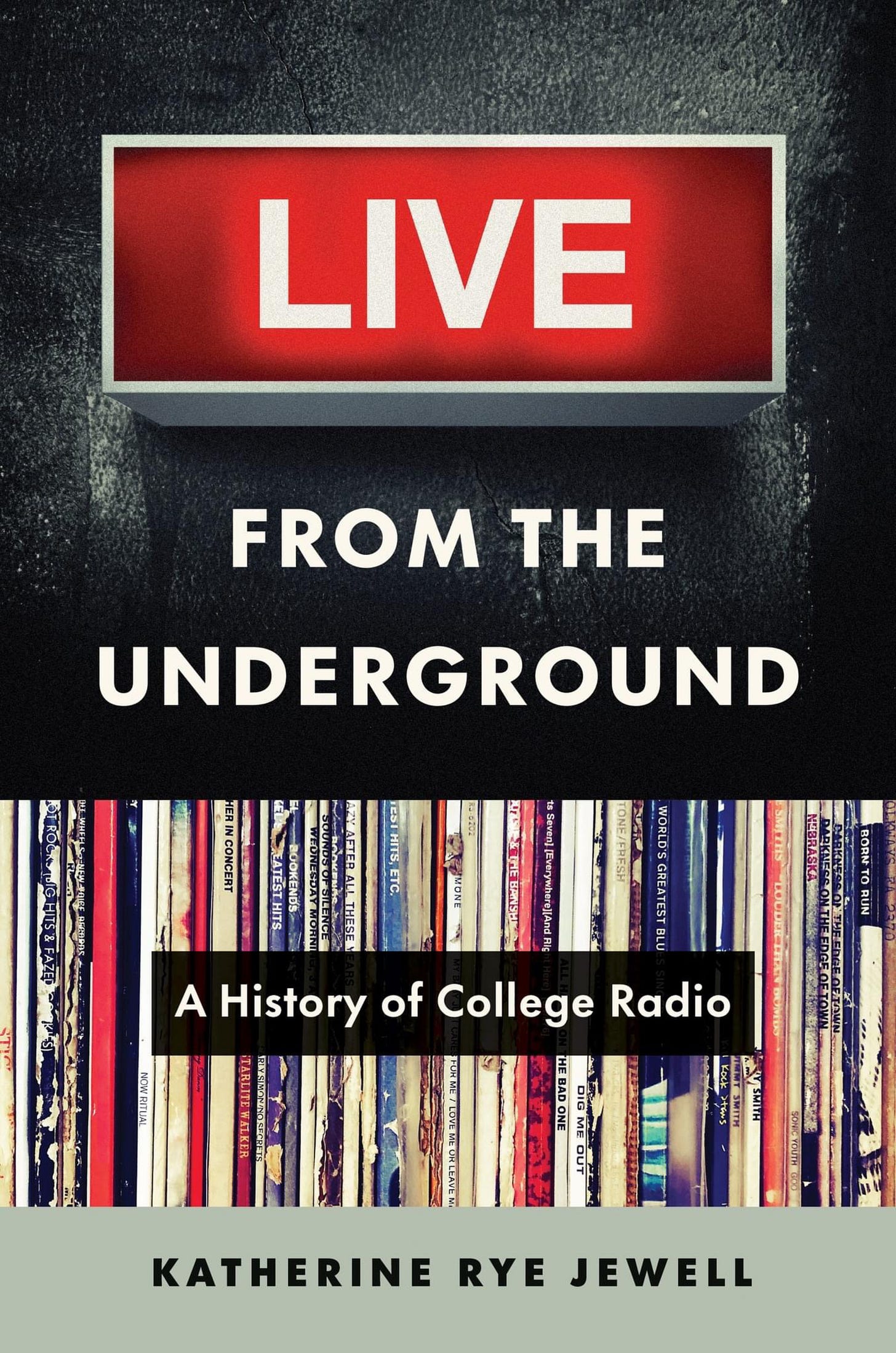Book Review: 'Live From the Underground – A History of College Radio'
A long time ago, in a broadcast booth far, far away, a great revolution took place
As a deeply personal story, Live From the Underground: A History of College Radio tips the scale of my mind back to the early 1990s, when I was a music journalist who helped shape what was categorized as “alternative” music.
Yet, author Katherine Rye Jewell points out with clarity that this slice of time, this rebelliousness encased in the airwaves from Bellingham to Boston was not solely the denizen of Nirvana and Treat Her Right. That line of thinking went way back to the low-wattage, free-form days of radio.
But as it pertains to quote-unquote college radio, the thinking has always been “left of the dial”-driven. In short, those numbers were considered safe spaces, as the author correctly surmises. With the advent of National Public Radio (NPR) in 1971, the airwaves could more fluidly move from the so-called block-format programming of a student-run endeavor into what can be considered a more structured network.
Yet college radio was considered a training ground, a hands-on ethos that could serve well in a professional career. It’s not to say that hackles couldn’t be raised in those young years, playing the “wrong” song or worse, subscribing to the real hell-raisers who used the “seven dirty words” in songs ad nauseum. Yes, it was a stream of punk, no-wave, hardcore, all in the good name of music directors who bucked the trend – like Boston’s WBCN – who hired scene insider Oedipus to give the station a dose of liberal outsider-ness.
Thrills "Hey (Not Another Face in the Crowd)"/kinodv.net/archive-portal/post-punknew-wave/YouTube
It was the DJs who had the power, as Rye Jewell accurately points out, to get the message out. But as this new form gathered steam, it wasn’t without rancor by squeezing in political platitudes, financial considerations, and the actual music that students wanted to hear. That could vary wildly from Ted Nugent to Talking Heads, depending on the location and who might take the lead in the charge toward ‘alternative’ programming.
Even more fascinating are the passages from Rye Jewell on how the Intercollegiate Broadcast System (IBS) helped define systemized standards and how by keeping the college stations left of dial could have a distinctive and profound effect. That’s not to say some didn’t want more literal tower wattage to gain strength on the airwaves. But as the ‘scenes’ began to emerge, i.e. Athens, Georgia vis a vis R.E.M., there was some pressure in getting stations to get a hold of major labels, as well as showcase more local music as “test” material for the listeners.
Bands that couldn’t get radio play? Rye Jewell delves into the coast-to-coast connections of fanzines, DIY promos, and specifically with shared cassettes: remember to remove the top tabs to prevent accidental erasure. There are documented chronic admissions of inconsistencies, battles between the volunteers, students, and interns who held sway on the mics, the fractured transient nature of college, and, of course, the administrative oversight that funded many university stations. But as the ‘80s turned into the ‘90s, the Golden Age of Indie Rock Radio was coming over the horizon.
Pavement – Cut Your Hair/℗© Concord Music Publishing LLC, Hipgnosis Songs Group/YouTube
As Rye Jewell asks the question, “Alternative to what?”, the narrowly defined juncture of college radio and major label association gradually morphed into “modern rock.” Case example: WFNX, based in Lynn, MA was able to keep the indie cred with interns that bounced from club to club, yet had the bias to get those just outside the mainstream higher notice. But if Nirvana’s Bleach (1989) signaled the onslaught, what happens when you go from modern rock chart darling to mass market sell-out?
There are short answers (Napster, college sports, the waning of terrestrial radio), the rise of self-producing music – tied to the rise of hip-hop – file sharing and MP3s. It all came about with a sense of existentialism mourning. The lack of a go-for-broke community, spread across the country, slowly turned inward, courtesy of curated playlists and streaming. But the nucleus of college radio is not dead – yet. Rye Jewell cites a new wave of community organizers turning into activists exampled by WXOX 97.1 FM in Louisville, KY which proudly promotes itself as a “noncommercial radio station dedicated to providing artists and community members access to the airwaves for creative and experimental use.”
As Rye Jewell concludes, “Yes, radio is still relevant. It’s just that the definition of radio has expanded.”
Live From the Underground: A History of College Radio by Katherine Rye Jewell is available from The University of North Carolina Press and Bookshop.org.





